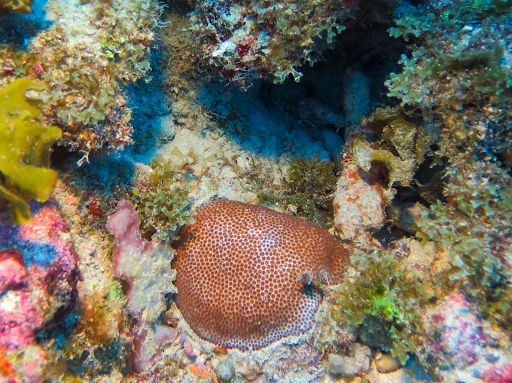
NCCOS-funded researchers investigated blushing star coral populations in the Florida Keys National Marine Sanctuary at shallow (less than 30 meters) and mesophotic (30 to 45 meters) depths and found four distinct genetic lineages. The two dominant lineages, at the sites sampled, showed high genetic connectivity between the shallow and mesophotic coral populations. Thus, for the blushing star coral in the Florida Keys, mesophotic populations have a high potential to serve as a source to reseed or restore the shallow populations. In the Florida Keys, where coral cover has been in decline since the 1970s, this provides a glimmer of hope for the future of coral reefs.
The blushing star coral (Stephanocoenia intersepta) is found throughout the tropical Western Atlantic. Similar to the great star coral (Montastraea cavernosa), the blushing star coral has a broad depth and geographic distribution, making it an ideal species to investigate how populations at different depths and locations may be related or “connected” to each other. While the great star coral is abundant throughout its depth range, the blushing star coral increases in abundance and cover at mesophotic depths.
The study, led by Harbor Branch Oceanographic Institute at Florida Atlantic University, was funded primarily by NOAA’s Office of Ocean Exploration and Research and in part by NCCOS through the Regional Ecosystem Research Program . The overarching project is investigating population connectivity for key coral, sponge, and fish species in shallow and mesophotic reefs of Flower Garden Banks National Marine Sanctuary and beyond to help managers develop marine protected areas that are effective and benefit present and future generations.
